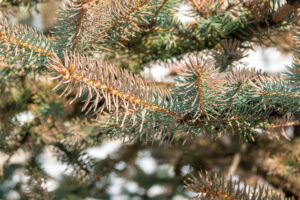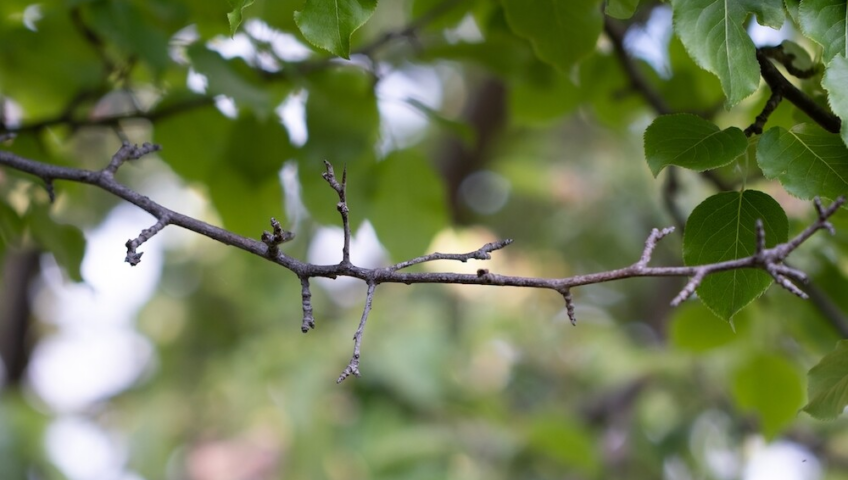Trees are an important part of any commercial or residential property. Their majestic beauty brings curb appeal, their foliage provides shade as we work or relax outside, and their presence can increase the value of your land. While trees are usually about as sturdy as they look, they’re not invincible; pests and diseases or even a lack of sufficient nutrients in the soil can result in tree decline and failure.

Do you have trees on your property in Minnesota that you’d like to protect from disease and decline? Continue reading to learn some early warning signs that something is wrong with your tree and how best to address these issues.
4 Early Warning Signs of a Tree in Distress
- Discolored or Misshapen Leaves – Unless it’s fall, the leaves on your tree should be green, not yellow. If your leaves are yellowing, it means that your tree has chlorosis, a condition which can result from insufficient nutrients or disease. Aside from turning yellow, leaves may also grow misshapen or have brown lesions. When this happens, your tree most likely has a pest issue or a disease. If you notice yellowing leaves, try fertilizing your trees to ensure they’re getting sufficient nutrients. If your leaves are otherwise discolored or misshapen, contact a tree care professional in Minnesota for assistance.
- Holes in Leaves – Leaves are often the easiest indicator of a tree in decline. In addition to leaves that are discolored or malformed, leaves that are full of holes are usually an early warning sign of tree health problems. Holes in leaves can be caused by either a fungal disease or an insect. If disease is responsible, your leaves may start out with blemishes on them before these give way to holes. If pests are the culprits, the holes will appear immediately. When you cannot identify the cause of damage to your leaves, your safest bet is to contact an arborist or other tree care professional. They can advise you on whether the damage is caused by insects which pose no serious threat to the tree or is a symptom of a more severe issue that requires treatment.
- Abundance of Dead Branches – One of the most apparent signs of a declining tree is that many of its branches, including very large branches, will begin to die and fall off. While it’s common for smaller, lower branches on a tree to die and drop, this is concerning when it happens with bigger, higher branches. When branches start dropping, it’s usually a result of a tree disease that is causing it distress. If you notice an excess of dead or fallen branches on a big tree on your property, call a tree care company in Minnesota for an inspection to figure out what’s wrong and how to fix the issue.
- Canopy Decline, Low Growth – Two early signs of tree decline that often happen together are a reduction in the foliage of the canopy and new growth toward the base of the tree. Healthy trees prioritize leaf growth in the canopy, where sunlight is the most plentiful. If you notice a tree suddenly begin to grow new branches and leaves near the base of the trunk, take a look at the tree’s canopy to see if it’s looking sparse; if it is, that means the new low growth is being triggered because the tree is stressed, probably by a pest or disease issue. Contact a local tree care company in Minnesota for treatments and other advice on how to save the tree – though the declining tree may need to be removed if it’s too far gone.
Tree Care Professionals Can Save Your Declining Trees
If you’ve noticed any of these warning signs of a stressed and declining tree, it’s time to bring in the pros who know how to save it. Give Pro-Tree Outdoor Services a call today if you need any tree health care services in the greater Twin Cities area!


Write a Comment